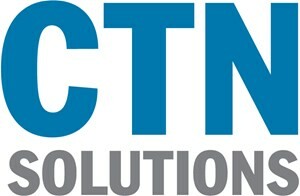With a lot of business owners being extra cautious about their spending and doing what they can to prevent unexpected interruptions they are doing everything they can to prevent data loss. This month, we thought we would tell you how data redundancy can help towards this goal.
Data loss can happen a few different ways. Malware can cause irreversible data loss. Your end-users can mistakenly cause data loss by overwriting or deleting data. A disgruntled employee could do even more damage by intentionally sabotaging your systems. Think about it this way: your data is stored on mechanical devices that are prone to corruption and mechanical failure when jostled just right. These devices don’t last forever and over time, their propensity to fail increases. If your data is only stored in one place, and that drive fails, you lose everything.
Data Loss Hurts in a Lot of Places
It can be a burden on your company when you lose any amount of data. If an entire hard drive on your server is lost, your business is going to feel it. The hard drive might contain years of client data, the database for your management software, or marketing materials created over a year by your marketing team. Data loss can change your business suddenly and in drastic ways.
Depending on the type and severity of the event where you lose your data, you could fall out of compliance with the regulations your business operates under, causing additional headaches. Data loss isn’t exclusive to internal IT problems, if one of your staff has a mobile device or laptop stolen, it could expose sensitive data.
Just Prevent Data Loss
The theory becomes simple then, just don’t lose data. Do what you can to protect it.
Fortunately, there are plenty of solutions created to stem the problem of data loss. One of those solutions is to securely back up your data.
Industry best practices dictate that your data should be stored in three places. We call this the 3-2-1 rule. It is defined by having three copies of your data, one being the original. You want two of those copies onsite, so that you can quickly restore data if it was lost or corrupted. It’s a solid practice to have your data stored on multiple hard drives within your server (called a RAID array). There are multiple types of RAID setups, some tend to lead to better performance, or better data security. Keep in mind, just having the data on two hard drives in a server doesn’t count for one of the backups. It’s good to have, but you’ll want your internal backup to be on a separate device altogether.
Finally, you will then want (at least) one copy of that data stored offsite should something happen to your place of business.
At CTN Solutions, we use a BDR (Backup and Disaster Recovery) device to back up data. It accomplishes backing up data to all three levels we talked about. Two onsite, one offsite. The BDR uses the cloud to securely keep a copy of your data offsite and ready for recovery. We use the BDR for all our client’s data, too.
If you would like to talk to one of our technicians about protecting your data, call us today at (610) 828- 5500.
